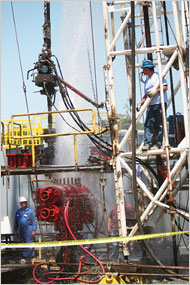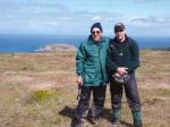
© UnknownGourd and squash artifacts were recovered from the sunken pit and platform in the Fox Temple at the Buena Vista site in central Peru.
Columbia, Mo. - The party was over more than 4,000 years ago, but the remnants still remain in the gourds and squashes that served as dishware. For the first time, University of Missouri researchers have studied the residues from gourds and squash artifacts that date back to 2200 B.C. and recovered starch grains from manioc, potato, chili pepper, arrowroot and algarrobo. The starches provide clues about the foods consumed at feasts and document the earliest evidence of the consumption of algarrobo and arrowroot in Peru.
"Archaeological starch grain research allows us to gain a better understanding of how ancient humans used plants, the types of food they ate, and how that food was prepared," said Neil Duncan, doctoral student of anthropology in the MU College of Arts and Science and lead author of the study that was published in the
Proceedings of the National Academy of Science (PNAS) this week. "This is the first study to analyze residue from bottle gourd or squash artifacts. Squash and bottle gourds had a variety of uses 4,000 years ago, including being used as dishes, net floats and symbolic containers. Residue analysis can help determine the specific use."








